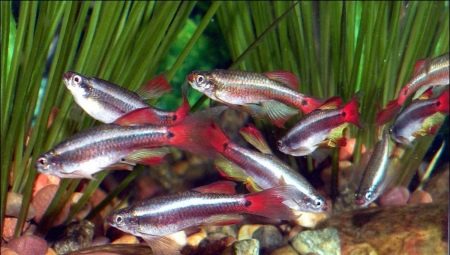Cardinal is a fairly popular aquarium fish, which in recent years has almost disappeared in nature and is grown only in captivity. Aquarists value it for its attractive appearance and peaceful nature. She does not cause any difficulties in leaving, she is very easy to get divorced, not picky in food, and also “gets along” with most of the underwater “neighbors”.
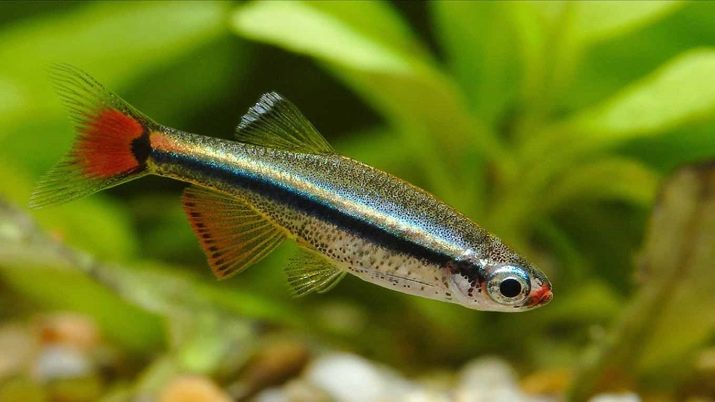
Types and their description
Cardinal is a very small aquarium fish, the length of which usually does not exceed 4 centimeters, although in case of exception it can stretch up to 6 centimeters. The fish lives from a year to a year and a half, which is generally characteristic of all small fish.
In nature, they prefer the upper layers of water and almost completely ignore the lower ones. Therefore, the cardinal most often picks up food from the surface of the water, which is also helped by his upward-directed mouth. The creature's antennae are absent, and the dorsal and anal fins are located on the same line of the body.
Body color is a mixture between brown and bronze shades. From the eyes to the tail there is a line ending with a black dot. In addition, a bright red spot is located right on the tail.
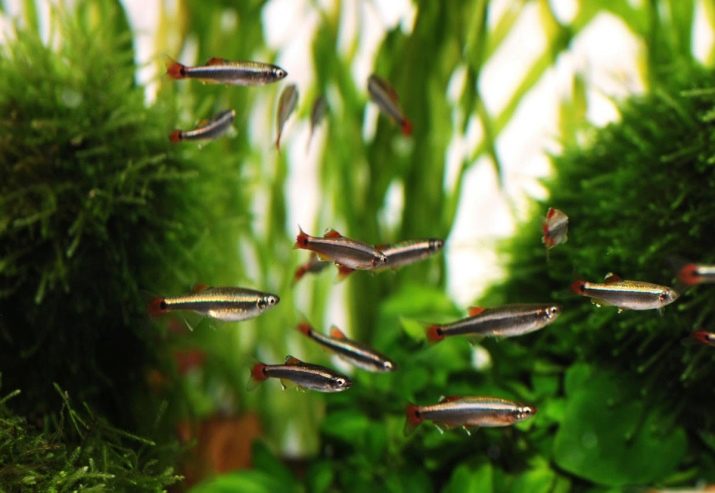
The tummy is painted in more faded colors than the rest of the body, and the fins are covered with red spots. Some individuals have other colors obtained by artificial means. Cardinals are characterized by a very peaceful character and calm behavior. They feel great in a small flock, but alone become nervous and shy and even become paler.
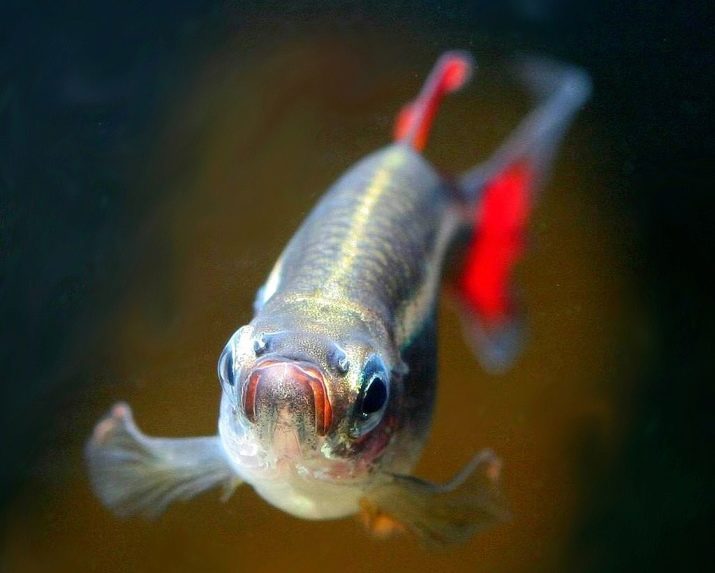
Specialists distinguish several basic varieties of cardinals.
- Cardinal Golden It has an elongated and rather thin body shape. His color is very beautiful, which is a mixture between gold and orange. Gills and fins contain a large amount of red pigment, which makes them the brightest part of the body. The length of a golden fish does not exceed 3-4 centimeters.
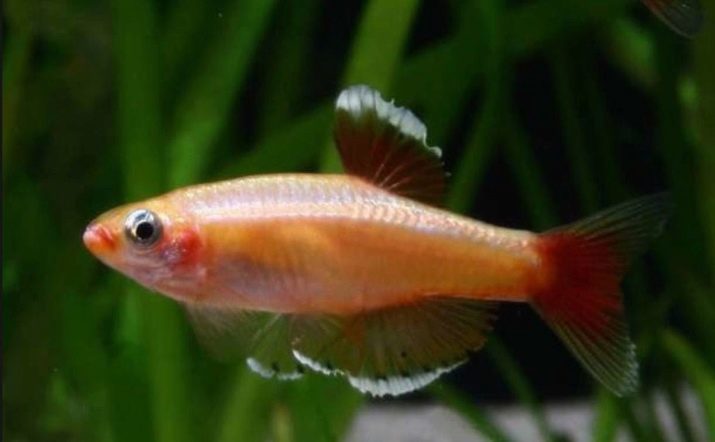
- Veil Cardinal differs from fellow silver-red color. The unusual name is due to the presence of graceful fins developing during movement.
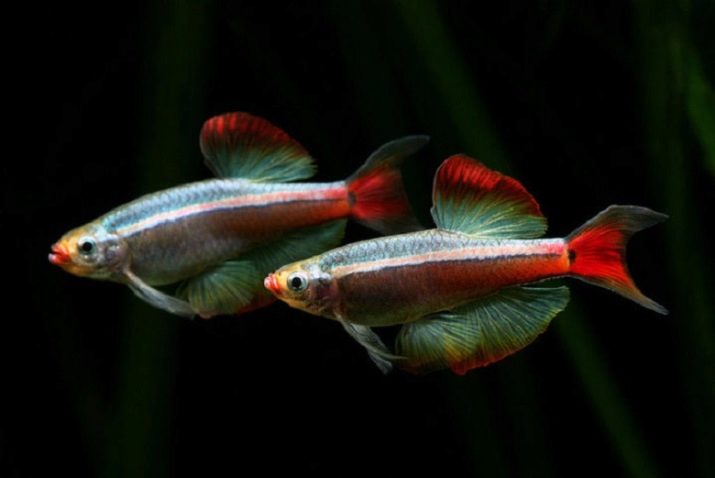
- Cardinal albino is a variety artificially obtained by breeders. In fact, he does not have a pronounced body color.
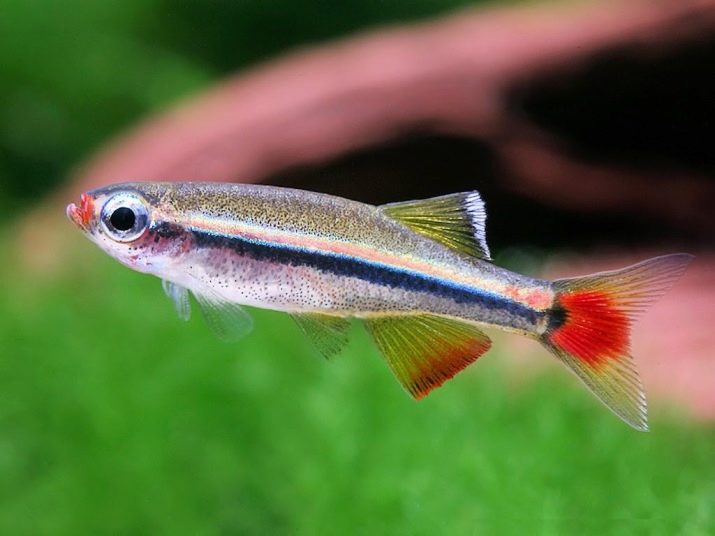
All cardinals are quite cheap, and the exact price is determined depending on the age of the creature.
In this way, fry are easily purchased at a price of 5 to 8 rubles per individual, and adult fish will have to pay from 15 to 20 rubles.
Compatibility
It is better to settle cardinals in packs, the number of members of which reaches more than 15 individuals. A small number of inhabitants of the aquarium negatively affects their condition. By themselves, these fish are very peaceful, not dangerous even for their own fry, therefore it is recommended to keep them with the same calm and good-natured creatures. Categorically it is impossible to settle them together with aggressive or simply large fish that will hunt.
Recommended “neighbors” include guppies, zebrafish, and galaxy microparsing.
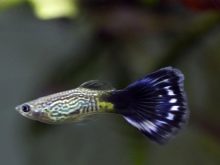
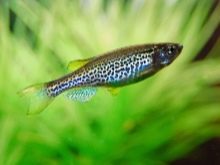
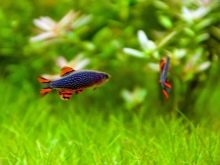
Despite the fact that some people settle cardinals with goldfish, this should not be, since the latter quite often eat the former. Do not put Chinese zebrafish in the aquarium, since they are rather passive and practically unable to participate in the struggle for territory. In this case, it is not the cardinals themselves who will suffer, but their cohabitants. Besides, it is dangerous to place fish with predators such as piranhas, angelfish, and astronotuses.
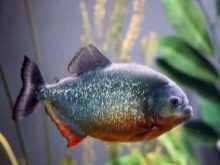
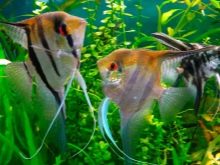
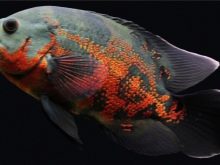
Growing conditions
The maintenance of cardinals in the aquarium and the care of them are not particularly difficult, since these fish are considered unpretentious. The main condition is not to use warm water in any case, since it is not only not like the cardinals, but also shortens their life. Moreover, it is believed that at low temperatures the creature's color becomes brighter. The optimum fluid temperature ranges from +18 to +20 degrees, and the stiffness does not go beyond the boundaries of the interval 4–20. Ideal the acidity level is 6–8.
The volume of the tank may be small. As a rule, a flock of 7 individuals needs only a thirty-liter capacity. Recommended water level varies from 20 to 30 centimeters.
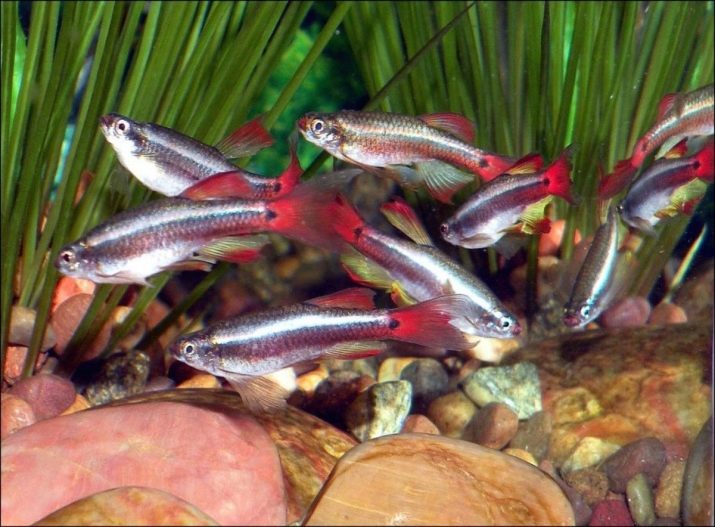
Plants in the aquarium should be, but not too many. A good choice are cultures such as ludwig, elodea and hornwort, as well as other cultures with small leaves. The surface of the tank can be populated by duckweed.
It is better to select a dark soil, consisting of ordinary river sand or finely ground pebbles. Necessary be sure to put a filter, as well as a device for aeration of water. Cardinals welcome strong currents, so you can take a powerful compressor.
It should also be mentioned that these fish are quite sensitive to the copper content in the water, so the use of drugs with this component should be extremely careful. Lighting should be bright, especially in the winter season. To decorate the aquarium, snags, stones and ceramic figures are suitable.
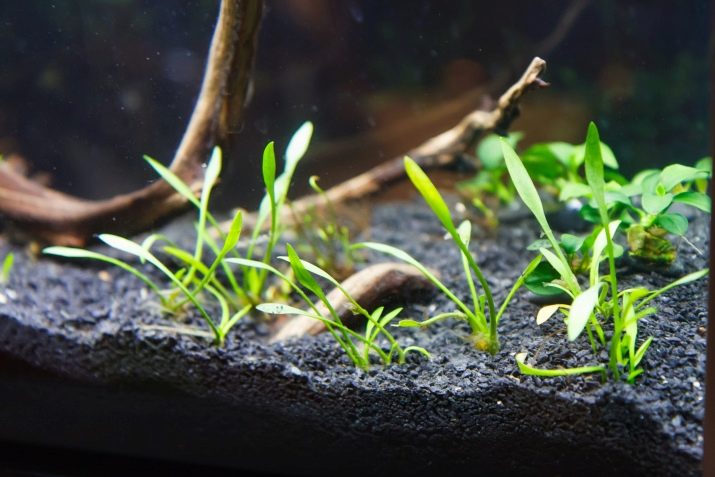
The container itself is better to take oblong, since the round walls irritate most fish. Weekly or every 10 days, the water in the aquarium should be replaced in an amount of 30% of the total.
To achieve the optimum level, the installation of artificial light sources will be required. In this case, incandescent lamps will have to be abandoned, since they quickly heat the water, and, as already mentioned, the cardinals do not tolerate heated liquid.Aquarium plants should be planted in such a way so that they do not interfere with the illumination of the insides of the tank, and the fish have enough space for movement and games.

Most cardinal diseases result from improper care or conditions of detention.
The infection can be introduced into the aquarium by other fish or by using dirty water or uncontaminated soil. Parasites result from the use of poor quality food or inadequate pet care. Stomach problems occur in fish due to malnutrition. Therefore, the prevention of all diseases, in fact, are regular hygiene measures and the preparation of high-quality feed.
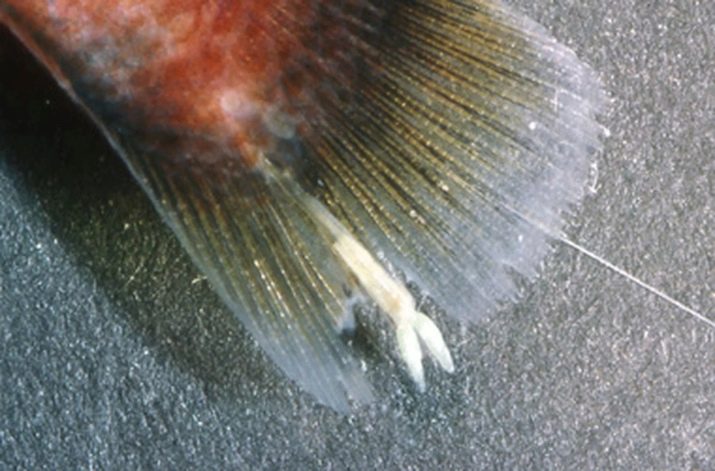
Feeding rules
Cardinals are happy to use all possible varieties of food, that is, live and frozen food, pellets and cereals. Under natural conditions, fish consume insects, and therefore in captivity will be satisfied with assorted bloodworms, tubule and artemia, to which are purchased flakes.
If the feed pieces are too large, then it is recommended to grind them, as the mouth of the cardinals is small.
Experts advise to cook for fish from time to time beef heart which is quite nutritious and practically does not spoil water. From plant foods it makes sense to pay attention to steamed semolina and crushed crumb of white bread.

Breeding
Males and females do not seem to have any pronounced differences. However, males are still slightly smaller in size, and their color is slightly more saturated. As for females, they are the owners of a pronounced rounded abdomen. Cardinals become sexually mature at the age of 6 to 13 months. It’s possible to understand that the deadline has come from the behavior of males, who begin to arrange “shows”, attracting the attention of females. This species is capable of throwing caviar throughout the year.
Breeding cardinals is recommended for beginner aquarists, as the whole process is quite simple. There are two main methods. In the first case, the aquarium contains only cardinals in large quantities, so the entire spawning process can be carried out directly in the tank. In the second case, a separate spawning is formed, the volume of which is from 20 to 40 liters. Several males and five females are transplanted into this container.
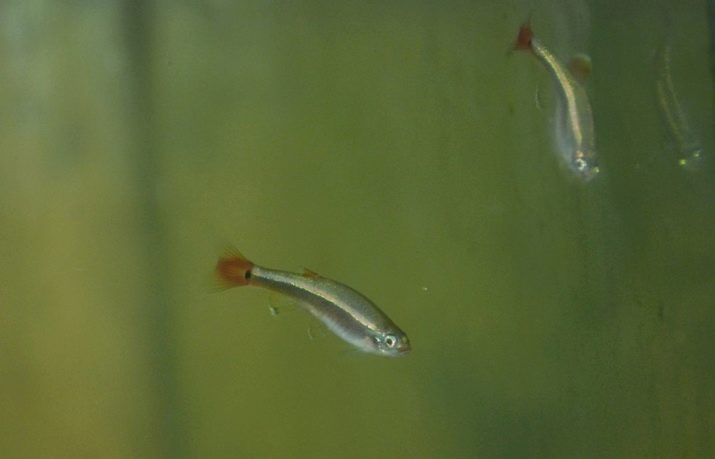
Immediately inside is added and greens, which will be required for laying eggs.
Comfortable water temperature ranges from +18 to +22, and the acidity level does not go beyond 6.5–7.5. There is no need for soil in spawning, but it is better to put an internal filter. Shortly before spawning, cardinals will have to be fed with more nutritious and nutritious food, better with live food: shrimp or tubule.
The process itself will last from 2 to 3 days, after which the female lays from 20 to 30 eggs in the prepared nest. After resting for 1-2 weeks, the fish is able to lay as much more eggs.
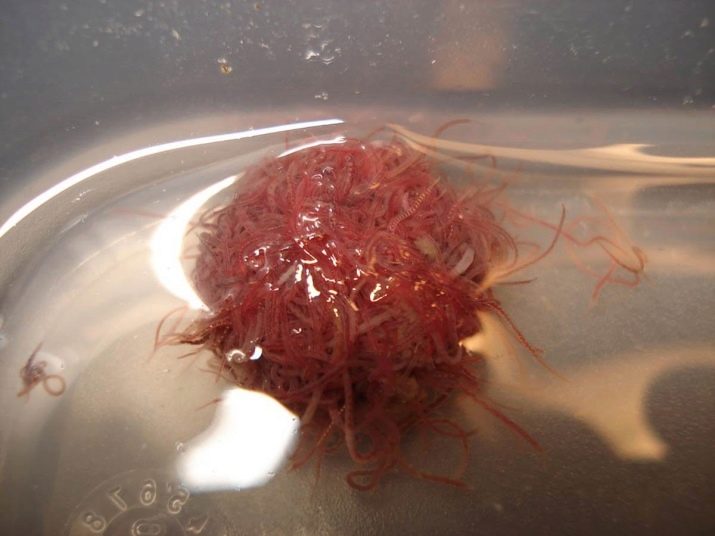
After spawning and the appearance of eggs, fish can be returned to the main aquarium. A maximum of 2 days later the larvae will appear, but the exact period is determined depending on the temperature of the water in the tank. After a few days, they transform into full-fledged fry. It is necessary to feed offspring in a special way, for example, egg yolk, ciliates or rotifers.
All major components be sure to grind almost to a state of dust. Moving babies to a common aquarium is not recommended until they are fully grown.
On the content of cardinals see below.
